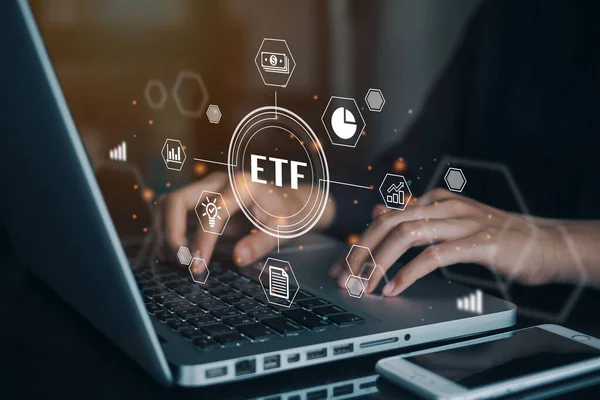Exchange-traded funds, or ETFs, have become a popular choice for investors looking for a mix of the convenience of stock trading and the benefits of mutual fund investments. But before you dive into ETF investing, it’s essential to understand what they are, how they work, and what factors you should consider to make informed decisions.
What Are ETFs?
An ETF is an investment fund that mirrors the performance of an index, a group of assets, or even a commodity like gold or oil. Unlike mutual funds, which are typically bought and sold at the end of the trading day, ETFs can be traded on stock exchanges throughout the day, just like regular stocks. This flexibility allows investors to buy and sell ETF units at any time during market hours at the prevailing market price.
Why Invest in ETFs?
ETFs offer several advantages over traditional mutual funds, making them an attractive option for both new and experienced investors. Here are some of the key benefits:
- Lower Fees: One of the biggest advantages of ETFs is their cost-effectiveness. ETFs are usually passively managed, which means they simply track an index or a basket of assets without the need for active stock picking by a manager. This passive management results in lower fees compared to actively managed mutual funds.
- Greater Liquidity: Since ETFs get traded on stock exchanges, they tend to be more liquid than mutual funds. This means you can easily buy or sell ETF units throughout the trading day, providing you with flexibility and quick access to your investment.
- Diversification: ETFs allow you to diversify your investment portfolio by tracking an index that includes multiple assets. For example, a single ETF might track the performance of the entire S&P 500 index, giving you exposure to hundreds of companies in one investment. This diversification can help reduce your overall investment risk.
Types of ETFs

There are various types of ETFs available, each catering to different investment strategies and goals. Here are some of the most common ones:
- Index ETFs: These ETFs aim to replicate the performance of a specific index, such as the Nifty 50 or the S&P 500.
- Actively Managed ETFs: Unlike index ETFs, actively managed ETFs are looked after by fund managers who pick individual stocks with the goal of outperforming the market.
- Commodity ETFs: These ETFs track the performance of a specific commodity, such as gold, oil, or silver.
- Bond ETFs: Bond ETFs track a bond index, such as the Bharat Bond ETF, which is designed to mirror the performance of government bonds.
How to Invest in ETFs?
There are two primary ways to invest in ETFs: through a New Fund Offer (NFO) or by purchasing units on the stock exchange after the ETF has been listed.
- New Fund Offer (NFO): During an ETF’s NFO, you can buy units at a predetermined offer price.
- Stock Exchange: Once an ETF is listed on a stock exchange, you can buy or sell units at the current market price, just like any other stock.
Factors to Consider Before Investing in ETFs
Investing in ETFs is not just about picking the first one that catches your eye. Here are some important factors to consider:
- Investment Goals: Clearly define your investment objectives. Are you saving for retirement, a future purchase, or another financial milestone? Your goals will help you choose the most suitable ETFs.
- Risk Tolerance: Assess how much risk you’re comfortable with. While ETFs generally carry lower risk than individual stocks, different types of ETFs come with varying risk levels. Conservative investors might prefer ETFs that track stable indices like the Nifty 50.
- Time Horizon: Consider how long you plan to keep your money invested. A long-term approach can help you weather short-term market fluctuations. At the same time, a shorter time horizon might require more stable ETF options.
- Expense Ratio: The expense ratio is the fee charged by the ETF’s management. It’s important to compare expense ratios across different ETFs to ensure you’re getting a cost-effective option.
- Liquidity: Ensure that the ETF has enough liquidity. High liquidity indicates you can easily sell or buy ETF units without significantly affecting the market price.
- Tracking Error: Assess how the ETF tracks its index. Lower tracking errors mean the ETF accurately follows the index, which is crucial for achieving the expected returns.
Our Take
Considering the factors mentioned, you can make informed decisions about investing in ETFs and enhance your investment portfolio with this versatile financial instrument. Whether you’re considering Bharat Bond ETFs or other ETF funds, understanding the nuances of ETF investing will help you achieve your financial goals.


0